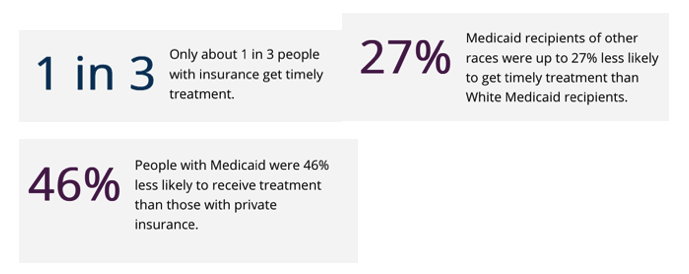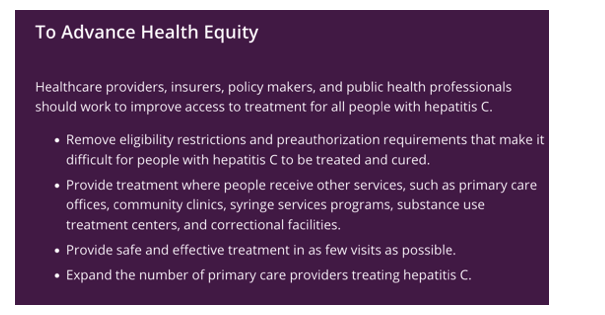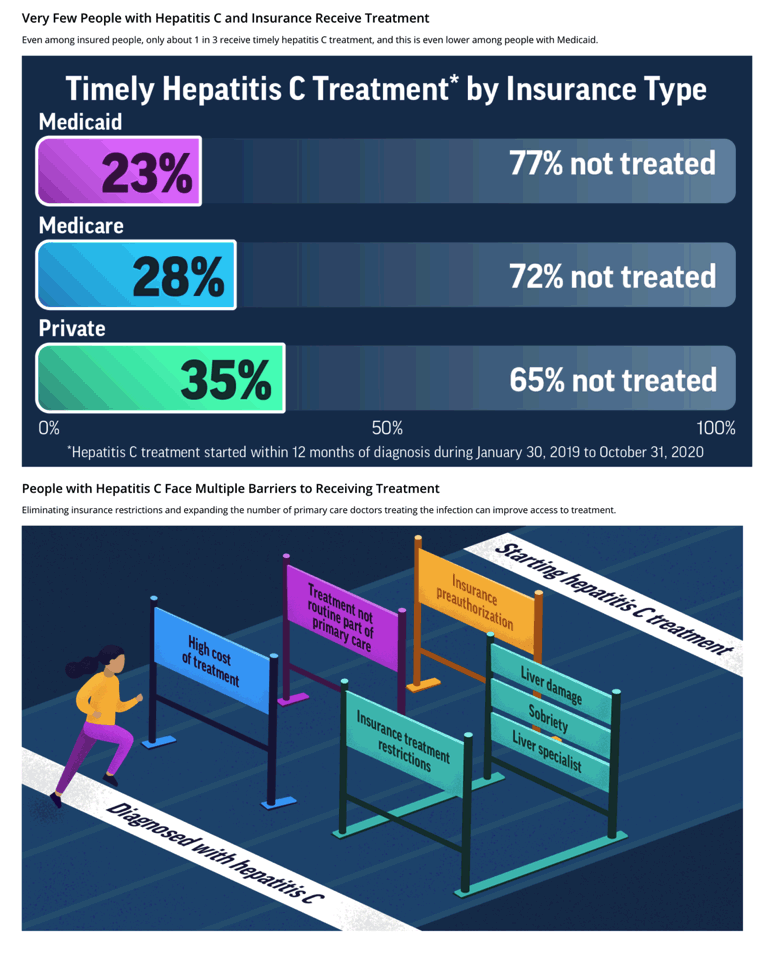| |
CDC: Too Few People - 33% - Treated for Hepatitis C -
Reducing Barriers Can Increase Treatment and Save Lives
|
| |
| |

To eliminate hepatitis C, more than 260,000 people should be treated every year. Right now, not enough people with hepatitis C are being treated yearly to reach the nation's viral hepatitis elimination goals. The number of people treated was highest in 2015 and declined to its lowest level in 2020.
• Many insurance providers still have restrictions in place, preventing many people with hepatitis C from accessing lifesaving treatments. These include:
• The patient must have liver damage (called "fibrosis").
• The doctor who writes the prescription must be a liver disease or infectious disease specialist.
• The patient must be sober.
• The doctor must receive preauthorization approval from the insurance provider to start treatment.
• Treatment is not routinely integrated into primary health care.
• Not enough primary care providers are treating hepatitis C.


Overview
Over 2 million adults in the United States have hepatitis C virus (HCV) infection, and new infections have continued to rise. Hepatitis C is usually spread through blood, often from injection drug use. Left untreated, hepatitis C can cause advanced liver disease, liver cancer, and death. In 2019, hepatitis C contributed to the deaths of more than 14,200 people in the United States; deaths associated with hepatitis C were higher for Black people (5 per 100,000) and Hispanic people (4 per 100,000) than for White people (3 per 100,000).
Hepatitis C is curable in more than 95% of cases. People who test positive for hepatitis C should be treated with direct-acting antiviral (DAA) medication. Timely treatment is important to prevent liver damage and further spread. Treatment saves lives, prevents ongoing spread, and can save costs by stopping the disease from progressing.
Safe and effective medications (DAAs) for hepatitis C have been available since 2014, yet few people receive treatment within one year of diagnosis. Expanding treatment for all people with hepatitis C is essential to reducing viral hepatitis-related disparities and eliminating hepatitis C as a national public health threat. Too many barriers to treatment remain, including getting diagnosed, being linked to care, and accessing treatment. Even among insured people, only about 1 in 3 receive timely hepatitis C treatment, and this is even lower among people with Medicaid insurance.
| |
| |
| |
|
|
|